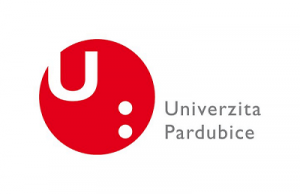 The University of Pardubice is one of the top universities in the Czech Republic, and particularly excels in the chemical sciences. It originally opened in 1950, in answer to a local petition, as an Institute for Chemical Technology, and after years of expansion, was officially rechristened in 1994. The university’s overall vision is to always be contributing to developments in advanced technologies, creative human potential, and scientific knowledge. So it makes sense that is has chosen the 3Dn Tabletop Factory in a Tool (FiT) system from Orlando company nScrypt to help support its ongoing research in 3D printing electronic structures and materials.
The University of Pardubice is one of the top universities in the Czech Republic, and particularly excels in the chemical sciences. It originally opened in 1950, in answer to a local petition, as an Institute for Chemical Technology, and after years of expansion, was officially rechristened in 1994. The university’s overall vision is to always be contributing to developments in advanced technologies, creative human potential, and scientific knowledge. So it makes sense that is has chosen the 3Dn Tabletop Factory in a Tool (FiT) system from Orlando company nScrypt to help support its ongoing research in 3D printing electronic structures and materials.
nScrypt, a spin-out from research and development think tank Sciperio Inc., designs and manufactures accurate, flexible, high-precision microdispensing and Direct Digital Manufacturing solutions and equipment for industrial applications, and has also branched out into bioprinting as well. Its next-generation systems are used for multiple applications in the aerospace and defense fields, in addition to others.

Precision microdispensing, material extrusion, micro-milling, and pick-and-place toolheads can run on the nScrypt Factory in a Tool
The university will be using nScrypt’s 3Dn Tabletop Dual-Head, multi-material, precision ball screw motion platform for its research. In order to ensure automated in-process inspection and computer vision routines, the system, which includes a point laser height sensor for Z-tracking and mapping for conformal 3D printing onto objects of any surface shape, will come with nVision cameras for monitoring the multiple toolheads. Additionally, the 3Dn Tabletop will also feature a SmartPump microdispensing toolhead.
“This machine’s SmartPump can microdispense more than 10,000 commercially available materials, ranging from a few centipoise (like water) to millions of centipoise (much thicker than peanut butter),” explained nScrypt CEO Ken Church. “We have sold machines to many universities and labs around the world, but this is our first machine going to the Czech Republic. This machine is perfect for printing electronic materials, so we are proud to be able to support the University’s research and education efforts.”
 The SmartPump toolhead has a pen tip with the smallest commercially available diameter at just ten microns, and can also get rid of “drooling” with pico-liter volumetric control.
The SmartPump toolhead has a pen tip with the smallest commercially available diameter at just ten microns, and can also get rid of “drooling” with pico-liter volumetric control.
Professor Tomáš Syrový, a member of the university’s Chemical Technology faculty, explained that nScrypt’s 3Dn-Tabletop machine is the perfect choice, as it can successfully print inks that have a wide variety of viscosity.
“The machine’s functionality is allowing us to prototype various functional structures using hundreds of commercial inks or our experimental ink formulations, which we are using in our labs for industrial oriented R&D and for education,” Professor Syrový continued. “This is a big advantage, because we can use identical inks which we in previous times optimized for conventional printing techniques, such as screen printing, gravure printing, or flexography, and which we are using for various large area material printing applications. This is the perfect tool to enable my group to do faster development of various applications like various sensory structures, battery electrode layers, or conductive paths on 3D shaped objects, which our industrial partners frequently request for their commercial applications. A big advantage of the nScrypt system is how it helps our educational mission, where the students are in contact with latest hi-tech printing technologies, which allow them precise material printing, 3D bioprinting of biologically compatible materials, or conformal printing on 3D objects.”
Discuss this and other 3D printing topics at 3DPrintBoard.com or share your thoughts in the Facebook comments below.
Subscribe to Our Email Newsletter
Stay up-to-date on all the latest news from the 3D printing industry and receive information and offers from third party vendors.
You May Also Like
Precision at the Microscale: UK Researchers Advance Medical Devices with BMF’s 3D Printing Tech
University of Nottingham researchers are using Boston Micro Fabrication‘s (BMF) 3D printing technology to develop medical devices that improve compatibility with human tissue. Funded by a UK grant, this project...
3D Printing Webinar and Event Roundup: April 21, 2024
It’s another busy week of webinars and events, starting with Hannover Messe in Germany and continuing with Metalcasting Congress, Chinaplas, TechBlick’s Innovation Festival, and more. Stratasys continues its advanced training...
3D Printing Webinar and Event Roundup: March 17, 2024
It’s another busy week of webinars and events, including SALMED 2024 and AM Forum in Berlin. Stratasys continues its in-person training and is offering two webinars, ASTM is holding a...
3D Printed Micro Antenna is 15% Smaller and 6X Lighter
Horizon Microtechnologies has achieved success in creating a high-frequency D-Band horn antenna through micro 3D printing. However, this achievement did not rely solely on 3D printing; it involved a combination...





























